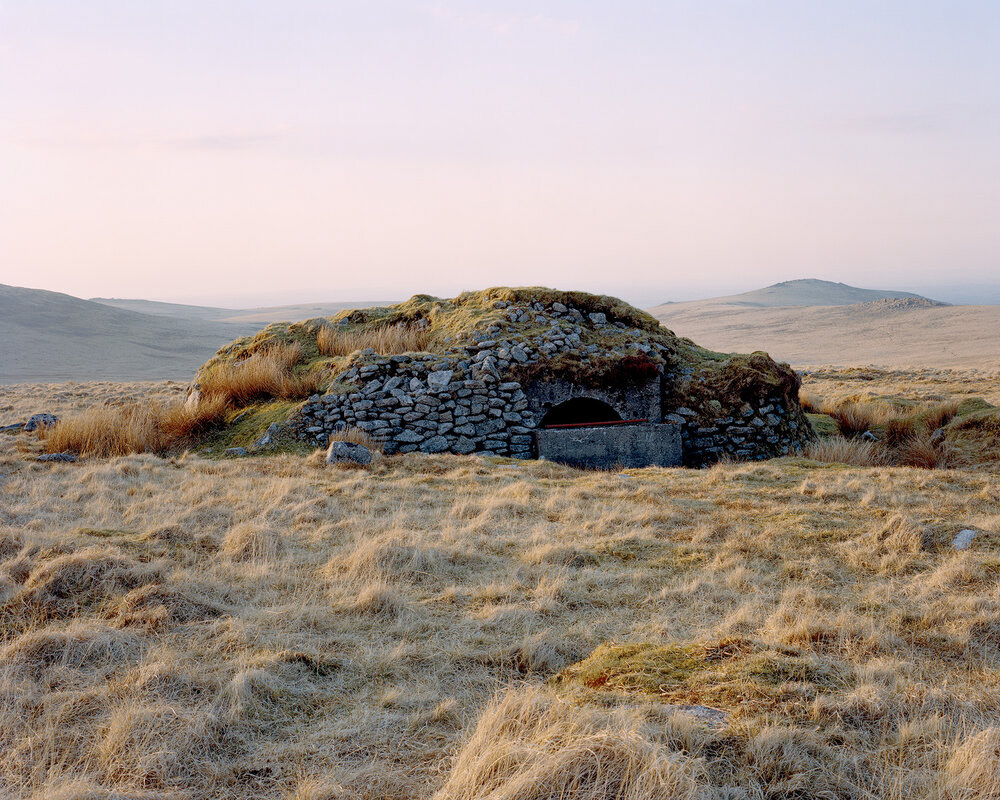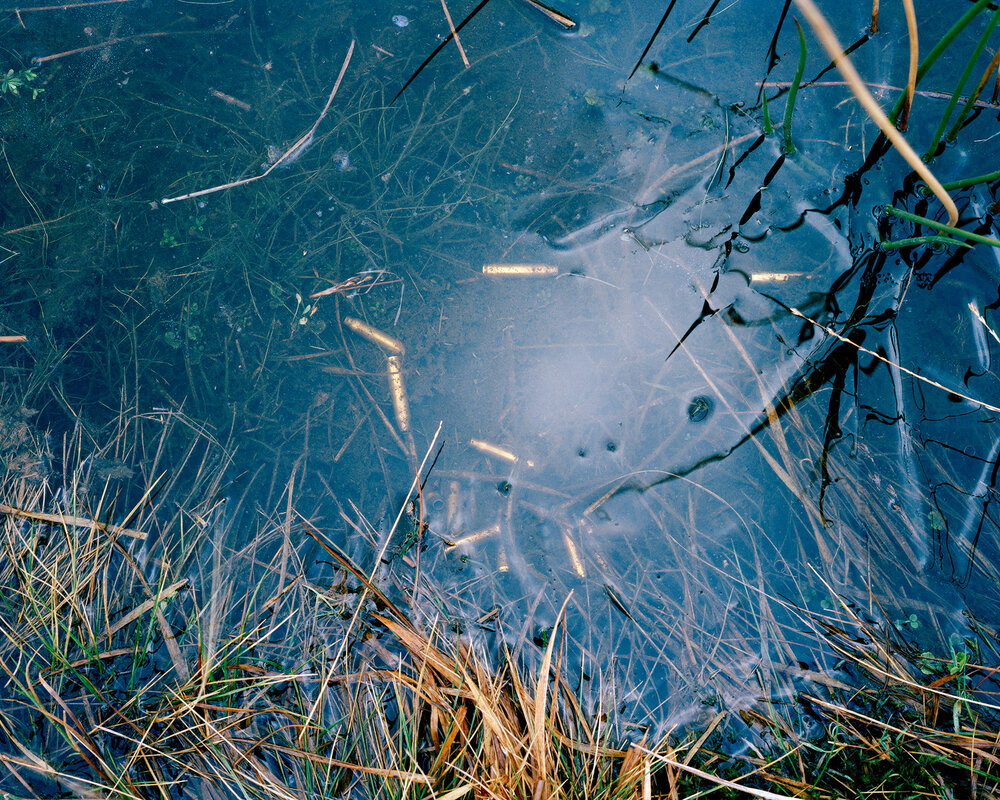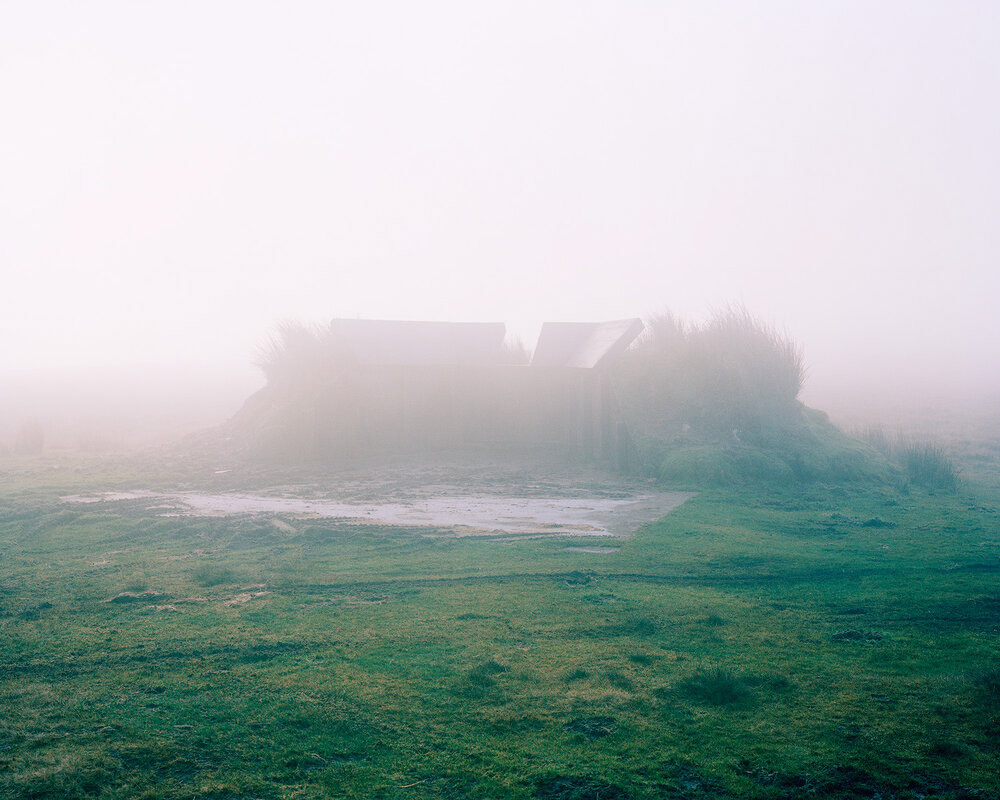Nicholas J R White is a photographer based on Dartmoor National Park, working on long-term personal projects in addition to accepting commissions internationally. His work examines the landscape and the ways in which we interact with our natural spaces.
In 2017, Nicholas was named as a winner in the Lens Culture Emerging Talent Awards and was awarded The Royal Photographic Society Environmental Bursary for his series ‘Black Dots’: an exploration of the United Kingdom’s network of mountain bothies. In 2018, Nicholas’ work was included in the British Journal of Photography Portrait of Britain Award and named as Judges Choice in Landscape Photographer of the Year. In 2020, Todd Hido selected Nicholas’ work ‘The Dust and The Vein’ as the winner in the IMA Next Landscape Award. The same year, Nicholas began a collaborative book project with acclaimed photographic artist Garry Fabian Miller, recording an imaginary 10-mile circle of Dartmoor landscape around Garry’s home.
Nicholas currently divides his time between the UK and Romania, where he is working on ‘Carpathia’, documenting the formation of a new European Wilderness Reserve in the Southern Carpathian Mountains.
Selected clients include TIME Magazine, Bloomberg Businessweek, Financial Times, The Guardian, The Telegraph Magazine and The New York Times.
“Bio — Nicholas J R White.” n.d. Accessed March 12, 2021. https://www.nicholasjrwhite.co.uk/bio.






'The Militarisation of Dartmoor' investigates Dartmoor National Park's long and complex relationship with the military, which has existed for thousands of years long before the areas official designation as a National Park in 1951. The work embraces this militarisation as part of Dartmoor's cultural heritage whilst also acknowledging the unfortunate damage caused to the environment as a result of these military practices.
Work on the project began in early 2012, at the very beginning of a renewed 21 year license from the Duchy of Cornwall, who lease the land to the Ministry of Defence. As British troops withdraw from a conflict role in Afghanistan in 2014 and return to extensive and rigorous training, the shape and appearance of the Dartmoor Training Area, and indeed that of the entire Defence Estate will be manipulated further to accommodate the needs of a contemporary fighting force.
The first edition of ‘The Militarisation of Dartmoor’ zine was published by Another Place Press in April 2020, and has since sold out. The second edition, also released in April 2020, is available to purchase via Another Place Press.
Nicolas White- “The Militarisation of Dartmoor — Nicholas J R White.” n.d. Accessed March 12, 2021. https://www.nicholasjrwhite.co.uk/projects/mod.
An Article of White's work from Musee Magazine
Written by Lana Nauphal
Nestled in the south-west of England, Dartmoor National Park is one of the country’s largest, and wildest, open expanses of land. Standing largely unchanged since before the dawn of history, its windswept moors, imposing granite tors, and fog-filled valleys exemplify a distinctively powerful landscape: 400 square miles of pure, timeless nature. Over the centuries, Dartmoor’s evocative terrain has inspired countless myths and legends—tales of thieving pixies, spectral beasts, and haunted graves— as well as the works of many artists and writers, from R.D. Blackmore to Agatha Christie. In 2012, then in his final year at Plymouth College of Art, photographer Nicholas J. R. White was similarly drawn to Dartmoor, but for a reason one might not initially suspect: namely, its use as a military training ground by the British Ministry of Defense.
Dartmoor has been used as a site for military training since the Napoleonic Wars in the early nineteenth century. Today, the Ministry of Defense’s Dartmoor Training Area consists of five training ranges which in total take up about forty-two squares miles, or just over eleven percent of the national park’s territory. The public has access to these moorland ranges, except when they are in use for live firing; red flags hung on tors indicate when caution must be taken. And so, with his heavy Sinar studio camera and tripod in tow, White hiked up to the moors from his parents’ house four times a week to explore the military compounds, and to chronicle their effect on the quietude of Dartmoor National Park.
White’s images artfully capture the subtle tension that exists between the training area’s man-made settlements and the national park’s natural environment; in White’s portrayal of this power dynamic, the wildness of the natural world takes primacy. The all-pervasive fog is so present it is almost personified— R.D. Blackmore would be proud—and image after image, it engulfs buildings, flag-posts, and horizons. There’s not a human being in sight; it’s the land itself that feels alive, in the vigor of its snow-covered rocks and windswept shrubbery, which are given center stage in White’s composition.
Despite the power accorded to the natural world in “The Militarisation of Dartmoor,” the series also acknowledges the indisputable damage these military practices have inflicted on the environment. One image in particular jumps out as an emblematic depiction of this injury: the frozen-blue earth, having been trampled in countless different directions, bears the scars of the troops’ bootprints, which fill up all four corners of the photograph. The damage manifests itself physically, of course— in the discarded bullet casings and artillery rounds littered in the mud, as other examples— but it lingers as well on a kind of metaphysical level. What does it mean for a national park—a space intended for recreation and tranquility, surrounded by nature’s beauty— to be appropriated for the practice and preparation of large-scale acts of violence?
While the few interior shots of the personnel accommodations at the Dartmoor Training Area showcase a desolate emptiness—which only enhances the sense of eeriness already imbedded in Dartmoor’s natural landscape—they also hint at the potential return of life to the ranges: pillows and folded bedding are neatly placed on the beds, as they await new occupants. With the withdrawal of British troops in conflict areas like Afghanistan, White notes, “the shape and appearance of the Dartmoor Training Area… will be manipulated further to accommodate the needs of a contemporary fighting force.” Indeed the military ranges in the heart of the glorious Dartmoor National Park aren’t going anywhere anytime soon, and White himself recognizes the training areas as an integral part of the park’s “cultural heritage.” In a way, they also stand as a symbol of our own cultural heritage— humanity’s endless push and pull between nature and artifice, between peace and destruction.
Administrator. 2021. “Nicholas J.R. White: The Militarisation of Dartmoor — Musée Magazine.” Musée Magazine. February 22, 2021. https://museemagazine.com/features/2021/2/22/nicholas-jr-white-the-militarisation-of-dartmoor.
My Analysis on Nicolas White's body of work
I think that there is a lot to learn from looking into not just a photographers work, but then the response that the body of work was given by the photographic world. We don’t just make for ourselves, we make work to be shared and exposed to as many people as we can. By a body of work being analysed by another party, with a pinch of salt you are able to use it to formulate your own ideas around the body of work and what others think about it.
Whites body of work “The Militarisation of The Moor” connects the viewer with his relationship with the land, his camera and the photographic enquiry that he has embarked on. This is seen in the variety in his compositions and juxtaposition between his landscape and interior photographs. If you were not to know the context behind the body of work the intermittent interior photographs bring to the surface the active military narrative that is perceptible on Dartmoor. In Nauphal’s article, she talks about how White is able to make the land feel alive without having shot any photographs of people. “There’s not a human being in sight; it’s the land itself that feels alive, in the vigor of its snow-covered rocks and windswept shrubbery, which are given center stage in White’s composition.”
This speaks to me as I connect with this feeling when I am viewing his work. The silence of human presence is powerful. It connects the viewer with the human aura that is visible through its manipulation and use of the land. This literal depiction brings forward the idea of isolation, secludedness which makes the viewer feel small when in front of the landscape photographs. This technique is also seen in White’s body of work “Black Dots” where he has documented the mountain bothies that are hidden in our mountain ranges in the UK.
This is one of White’s images from this body of work. It is one of few images which shows the calm and warm tones of Dartmoor from the silent early morning light that he has captured. The image captures an observation post that the land has begun to grow over and take back for its own. The form of the rock stacked dwelling emulates the contours of the landscape that sits on the horizon of the large format photograph. This disguise distorts the human impact that the observation post has on the land which I believe strengthens the connection that man can have with the land. The primitive-looking structure makes the viewer think about what the post may be used for and whether the military still has a use for such structures on our Moorland. Without the context of the project, you may not realise that this is a lookout post, considering it to just be one of the many structure’s and dwellings that Dartmoor has reclaimed over the years after mans recline of industrial use and occupation on the Moor.
It is a common theme throughout White’s work to explore human isolation that is in the landscape. Capturing locations with usually one element of human activity in a large and open landscape leading the viewer to feel in awe and perhaps epiphanise the relationship that they have with the land. This provokes my thought as in many of White’s photographs, the viewer is left feeling insignificant compared to the natural world around the anthropological elements in the imagery. I find that in landscape photography, you connect with the human stamp that is in the image first. You then look out from that, which is where I gather the feeling of my size within the photograph which can add or diminish the feeling of power. In White’s photography, any feeling of power plummets as the power of the natural world controls the way that man is able to use the land that is captured.
These ideas are continued and developed in White’s project “Black Dots” which ensue’s “The Militarisation of The Moor” which is seen to be the body of work that ignited his photographic career. The Mountain bothies that he photographed convey the same feeling that I am gathering from this image shot on Dartmoor. The ideas of seclusion, isolation and loneliness in the landscape is a pinnacle character of White’s practice and one that I can connect with through my personal experiences and photographic practice.